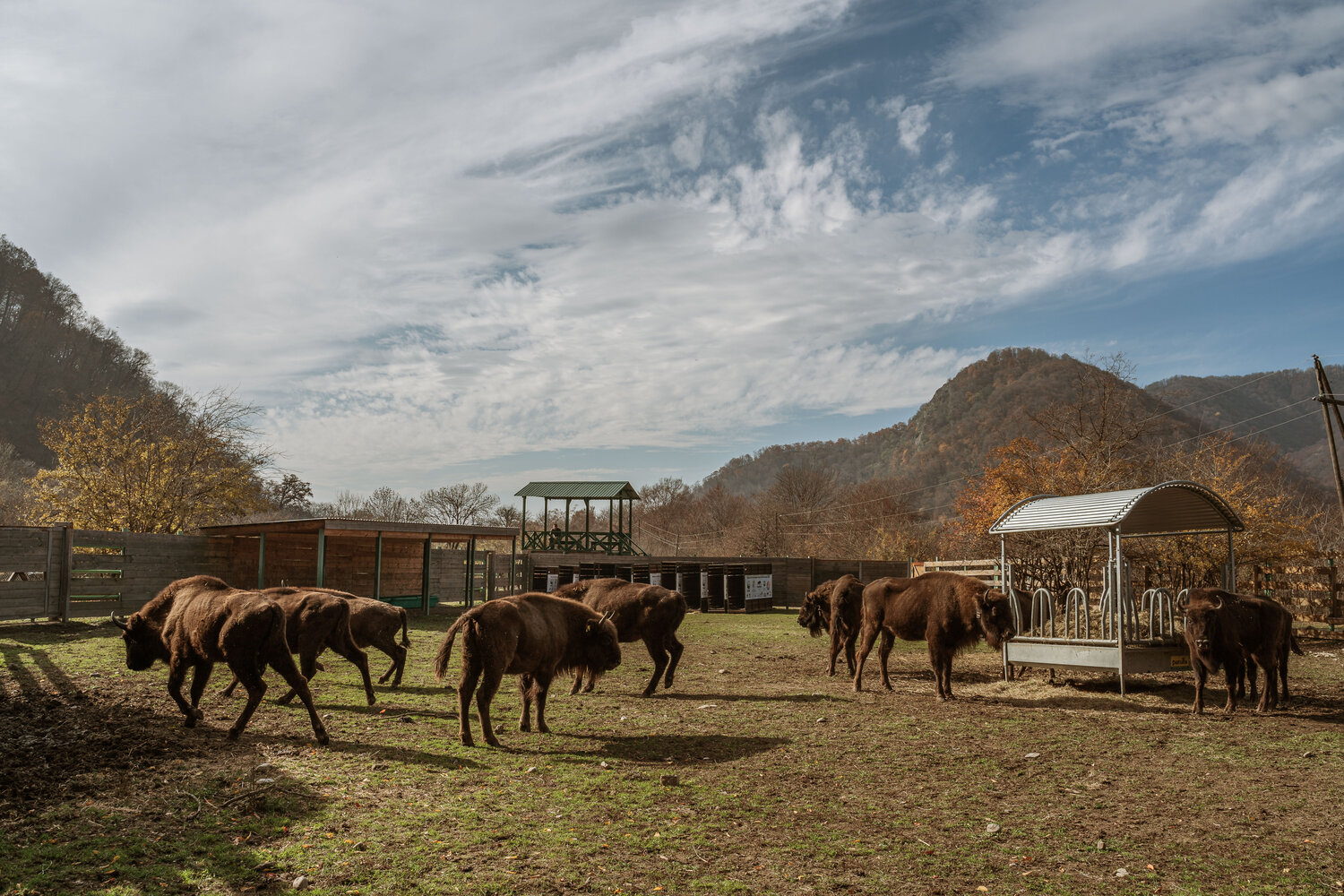The historic comeback of the European bison is one of the greatest success stories in international species conservation. Once extinct in the wild, these bison can once more be found roaming through European forests. The history of the European bison is inextricably linked to Berlin. Even before the last wild bison was shot in the Caucasus in 1927, wiping out the species in its natural habitat, Berlin had already become the cradle of its revival: on 25 and 26 August 1923, committed experts met at Zoo Berlin to found the International Society for the Protection of the European Bison.
Marking the anniversary of this important event a century ago, Zoo and Tierpark Director Dr Andreas Knieriem remarked: “Zoo Berlin is a historic place that combines both the traditions and the future of animal-keeping. I am delighted that the bold vision of returning the European bison to the wild, which began right here 100 years ago, still connects us with the WWF and other important partners. This project has taught us that when multiple conservation partners pull together in pursuit of a shared goal, there are no limits to what we can achieve.”
The story of the European bison is one of the most encouraging in modern species conservation, but action is still needed to secure its long-term future. In 2019, Zoo and Tierpark Berlin teamed up with WWF Germany to start returning captive-born European bison to their natural habitat in the Caucasus. So far, the reintroduction project in Azerbaijan has released 36 bison in the core zone of the 1,300 km² Shahdag National Park. In autumn 2023, ten more bison will embark on the journey from Berlin to Baku. The reintroduced bison have already produced young, and the population currently stands at 48. By 2028, a total of 100 bison from European zoos will have joined the project to ensure the establishment of a stable population in Azerbaijan.
“Since the gates to the core zone of the national park opened in 2020, bison are officially living wild in Azerbaijan once more,” says Aurel Heidelberg, Caucasus Programme Manager at WWF Germany. “A project like this is an enormous undertaking that is only possible thanks to long-term, trusting collaborations between international, national and – very importantly – local partners.”
“Without zoos, the European bison would no longer exist today,” notes Christian Kern, Zoological Director of Zoo and Tierpark Berlin, highlighting the essential role these institutions play in the global species protection network. “The reintroduction of otherwise extinct animals into the wild is an extremely complex task that requires long-term commitment. This is not a task that any one country, zoo or environmental organisation could take on alone. The bison reintroduction project has clearly demonstrated that species conservation is a group effort.” Zoo Berlin and WWF are part of the UN Decade for Ecosystem Restoration 2021 - 2030 and, together with countries, organisations and initiatives, is pursuing a common goal: a strong and socially broad-based global movement that promotes the restoration of ecosystems and could stop species extinction.
Background: International Society for the Protection of the European Bison
The International Society for the Protection of the European Bison was founded at Zoo Berlin on 25 and 26 August 1923. Numerous experts – both private individuals and institutions – joined the society. They included prominent zoologists such as Dr Erna Mohr, Hermann Pohle and Max Hilzheimer as well as institutions such as the Polish Hunting Association, Zoo Berlin, and Zoo Poznan. One of the founding members was Kurt Primel, Director of Zoo Frankfurt. At the initial founding meeting in Berlin, he was elected the society’s first chair. In 1932 the society published the first European bison studbook. The society was the precursor of today’s European Endangered Species Programme (EEP), which launched in 1995. The first official European bison EEP coordinator was Prof. Wanda Olech.
The return of the European bison – key data
• European bison have been living at Zoo Berlin since 1872. In 1923, four to eight bison lived here. More than 200 European bison have been born at Zoo and Tierpark Berlin in total.
• The last wild lowland European bison was shot in 1919, followed by the last member of the mountain subspecies in 1927. That left these majestic bovines extinct in the wild.
• Only 56 individuals survived. All the members of today’s European bison population are descended from just 12 founding progenitors that came from Zoo Berlin, Zoo Frankfurt, Budapest Zoo, Schönbrunn Zoo, the Białowieża Forest, the Pszczyna bison reservation and the Caucasus.
• The global wild European bison population now stands at 8,225 individuals. Shahdag National Park is currently home to 48 bison – 15 of them young animals who were born there. So far, WWF and Tierpark Berlin have transported 36 bison from European zoos to Azerbaijan from Berlin.
• In 2004, the Heinz Sielmann Foundation established a large mammal project on the western outskirts of Berlin. This project is unique in Germany. Currently, around 130 bison are living in the “core zone” of a former military training area close to the village of Döberitz. They form Germany’s largest European bison herd. The first individuals moved into the foundation’s nature reserve on the Döberitz heath in 2006, and since 2010 they have lived alongside Przewalski’s horses and red deer on an area of 1,850 hectares surrounded by a 22 km fence.
Bildmaterial: © WWF Aserbaidschan / Tierpark Berlin / WWF










